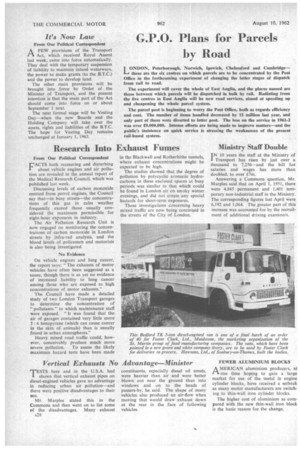Research Into Exhaust Fumes
Page 30

If you've noticed an error in this article please click here to report it so we can fix it.
From Our Political Correspondent
FACTS both reassuring and disturbing about vehicle engines and air pollution are revealed in the annual report of the Medical Research Council, which was published last week.
Discussing levels of carbon monoxide emitted from petrol engines, the Council say that—in busy streets—the concentrations of this gas in calm weather frequently exceed those usually considered the maximum permissible for eight-hour exposures in industry.
The Air Pollution Research Unit is now engaged on monitoring the concentrations of carbon monoxide in London streets by infra-red analysis, and the blood levels of policemen and motorists is also being investigated.
No Evidence On vehicle engines and lung cancer, the report says: "The exhausts of motor vehicles have often been suggested as a cause, though there is as yet no evidence of increased liability to lung cancer among those who are exposed to high concentrations of motor exhausts."
The Council have made a detailed study of two London Transport garages to determine the concentration of " pollutants " to which maintenance staff were exposed. "It was found that the air of garages contained very little more 3 : 4 benzpyrene (which can cause cancer in the skin of animals) than is usually found in urban atmospheres."
Heavy mixed road traffic could, however, conceivably produce much more severe pollution. To assess the likely maximum hazard tests have been made in the Blackwall and Rotherhithe tunnels, where exhaust concentrations might be expected to be high.
The studies showed that the degree of pollution by polycyclic aromatic hydrocarbons in these enclosed spaces at busy periods was similar to that which could be found in London air on smoky winter evenings, and did not create any special hazards for short-term exposures.
These investigations concerning heavy mixed traffic are now being continued in the streets of the City of London.
















































































































